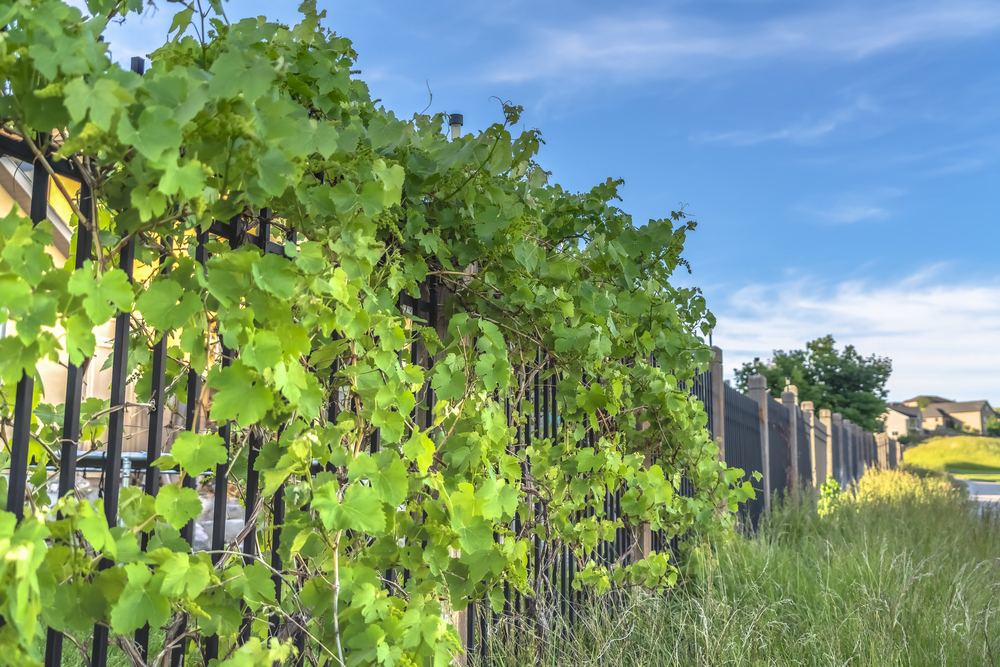Featured

Your fencing is a crucial component of your residential property, providing safety and security, personal privacy, and aesthetic appeal. There are numerous approaches you can carry out to protect your fencing and extend its life.
- Pick the Right Product. The first step in protecting your fence from weather-related damage is to select the ideal product for your environment. Some materials are a lot more resistant to the aspects than others.
Wooden Fences: While typical wood fences use an all-natural, appealing look, they are especially vulnerable to water rot, damage, and pest invasion. Such as cedar or redwood if you choose timber, choose pressure-treated lumber or timber kinds that are more immune to dampness. Plastic Fencings: Plastic is a low-maintenance alternative that withstands fading, breaking, and warping. It's likewise unsusceptible to rot and insects, making it perfect for locations with high humidity or exposure to rain. Steel Fences: Light weight aluminum and functioned iron fencings are resistant and long lasting to weathering. Nonetheless, they can corrosion if subjected to moisture for extensive periods. Select a galvanized or powder-coated metal fence to decrease the risk of deterioration. Composite Fences: These are made from a mix of timber fibers and plastic, providing the most effective of both globes-- resilience and a natural appearance. Compound fencings are immune to dampness, fading, and decaying, making them wonderful for environments with frequent rain or snow. 2. Apply Protective Coatings. Despite the product, using a protective coating can aid secure your fence from weather damages.

Wooden Fencings: A good-quality tarnish or sealant can aid shield your timber fencing from dampness, UV rays, and pests. These coverings develop a barrier that protects against water from leaking into the timber and causing rot. You ought to apply a fresh coat of discolor or sealer every couple of years, depending upon your climate and the level of exposure to rainfall and sunlight. Vinyl Fences: Although plastic fences are generally resistant to weathering, they can still suffer from discoloration due to the sun's UV rays. You can utilize specialized vinyl cleaners or UV protectants to keep the color and appearance of your fence. Metal Fences: For steel fencings, think about using a rust-resistant guide and a coat of paint developed for outdoor use. Powder covering is an additional superb choice for metal fencings, as it creates a long lasting, weather-resistant coating that withstands corrosion and corrosion. 3. Normal Cleaning and Maintenance. Maintaining your fencing on a regular basis is essential to preventing damages from the components. Dust, leaves, and various other particles can develop on your fence, which can trigger discoloration, mold, and mildew gradually.
Wood Fences: Tidy your wood fencing every six months with a light detergent service or a stress washer (on a reduced setup) to get rid of dirt and gunk. Watch out for very early signs of rot, especially at the base of the fencing blog posts where wetness often tends to accumulate. Vinyl Fencings: Vinyl fencings are easy to tidy with soap and water. Use a blend of vinegar and water to delicately scrub the influenced areas if you notice mold and mildew or mold. Stay clear of harsh chemicals that could damage the surface area. Steel Fencings: Frequently clean metal fencings with a soft towel or sponge to eliminate rust-causing particles. For wrought iron fences, consider using a rust-inhibiting product to stop corrosion. 4. Appropriate Setup and Positioning. Correct installment of your fencing can go a lengthy method in shielding it from weather-related damage. Guarantee that your fencing is securely anchored which posts are established deep sufficient into the ground to stop moving during hefty winds or storms. Installing bracing at essential factors can give additional support. if your fencing is subject to hefty winds.
In addition, take into consideration the positioning of your fence. If possible, plant hedges or trees tactically around your fencing to give some natural protection from rough winds, extreme sunlight, or driving rain. Be cautious not to plant too close to the fencing, as origins can harm or shift messages over time.
- Address Tornado Damage Quickly. Tornados, particularly those with high winds or hailstorm, can trigger instant damage to your fencing. After a tornado, evaluate your fencing for broken areas, leaning posts, or fallen debris.
- Winterize Your Fencing. Cold temperatures and ice can be particularly damaging to wood fences. To prevent this, make certain that the base of your fencing posts is raised and not resting in pooled water.
Conclusion. Weather-related damages is an unavoidable component of owning a fencing, yet with the right precautions and regular upkeep, you can significantly prolong the life of your fencing. Pick sturdy products matched for your environment, apply protective layers, tidy routinely, and make sure correct installation. With these actions, you can protect your fencing from the aspects and maintain its look and functionality for many years ahead.
Latest Posts
Find Out Save Big on Car Maintenance with Montclare Auto Repair’s Special Deals
Published May 27, 25
1 min read
Explore WyHy Federal Credit Union – Essential Perks for Your Financial Success
Published May 27, 25
1 min read
Discover WyHy FCU – Key Advantages for Your Future
Published May 24, 25
1 min read